Fujifilm X-T5 vs Nikon Z6III – Which Should You Buy?
The Fujifilm X-T5 is, in my opinion, Fuji’s best photographer’s camera. The image quality is excellent, the handling is unique in today’s market, and the autofocus, despite what some say, is more than good enough in most real situations. But the internet will tell you that you need full-frame, and that’s where the Nikon Z6III comes in — a full-frame body with serious specs, highly praised autofocus, and a lens lineup that actually understands photographers, all for not much more money or weight than the APS-C X-T5. If you have made your choice, I have an article on the best lenses for the X-T5 here and the best lenses for the Nikon Z6III here and if you already have your Z6III, then these are the best accessories for it. For a full review of the Nikon Z6III see this article. If you’re considering whether it’s worth spending even more then I compared the Nikon Z6III vs the Nikon Z8 too.
So which one is actually the better camera, and more importantly — which one makes more sense to buy? I own both, and in this article I’m going to break it down to what really matters, without all the hype.
This article contains affiliate links. If you purchase through one of these links, I may receive a small commission at no extra cost to you. It helps support the site and keeps the reviews honest and independent.
Quick Decision: Fujifilm X-T5 vs Nikon Z6III
Choose the Nikon Z6III if:
- You shoot in low light or want top-tier subject-tracking AF.
- You need one camera that reliably gets the job done in any situation.
- You want full-frame performance with a mature Z-mount lens lineup.
- You see value in pro-level capability for only a small price jump over the X-T5.
Choose the Fujifilm X-T5 if:
- You rarely shoot fast action and don’t need cutting-edge tracking AF.
- You value tactile controls and a camera designed for people who enjoy photography.
- You want a lighter setup with Fuji’s compact f/2 primes (size Nikon can’t match).
- You care more about shooting experience than the last 10% of AF/IQ gains.
- You want high resolution (40MP APS-C) without full-frame glass bulk/cost.
Specifications
Fujifilm X-T5
- Sensor: 40MP APS-C X-Trans
- EVF: 3.69M-dot OLED
- Screen: 3.0" 1.84M-dot 3-way tilt
- Autofocus: Phase-detect, 425 points
- IBIS: Up to 7 stops
- Battery: NP-W235 (2200mAh), ~580 shots CIPA
- Price: $1,999
Check price on Amazon →
Nikon Z6III
- Sensor: 24.5MP Full-Frame BSI
- EVF: 5.76M-dot OLED
- Screen: 3.2" 2.1M-dot fully articulated (vari-angle)
- Autofocus: Phase-detect hybrid, 299 points
- IBIS: Up to 8 stops
- Battery: EN-EL15c (2280mAh), ~600 shots CIPA
- Price: $2,196
Check price on Amazon →
Note: Prices are accurate at time of writing and may change.
Build & Handling – What They Actually Feel Like to Use
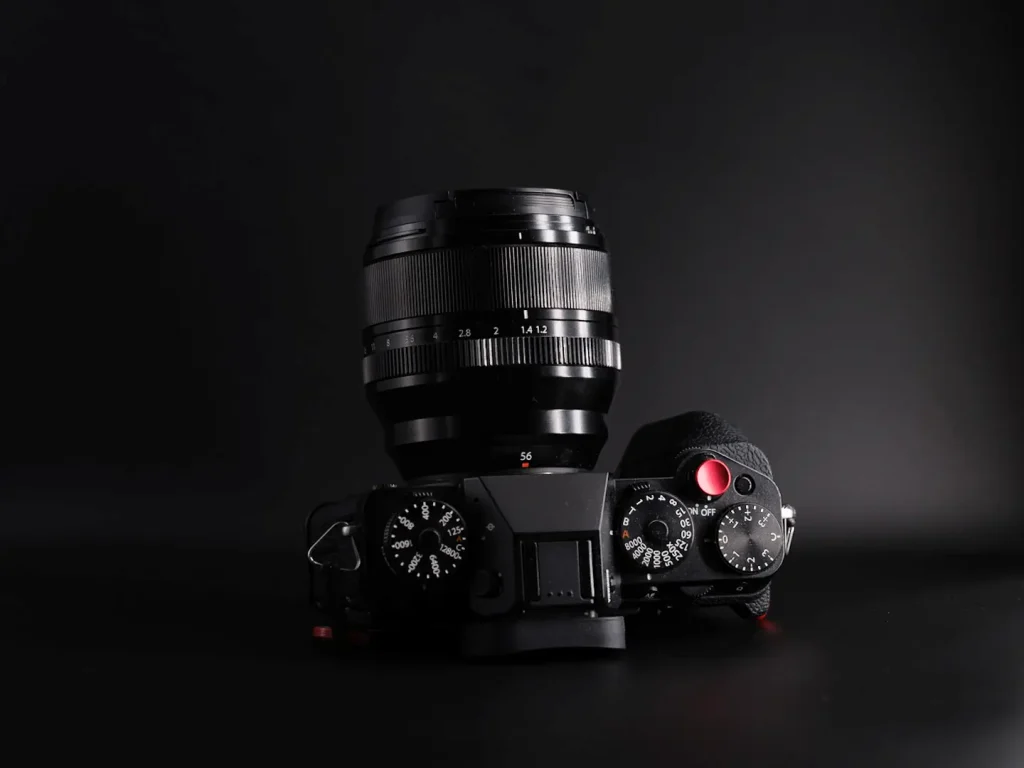
The Fujifilm X-T5 has that retro Fuji charm — the dedicated shutter speed and ISO dials immediately give it a different character from most modern cameras. It’s a good-looking camera, and for some of us, that does matter. The grip is small but fine when paired with Fuji’s smaller primes. Once you move to lenses like the XF 33mm f/1.4 or 56mm f/1.2, I find adding the SmallRig grip extension makes a noticeable difference to comfort. Build quality is solid, all the dials and buttons have a reassuring tactile click, and overall the XT5 feels compact, efficient, and well thought out.

The Nikon Z6III feels like it was built with a different intent entirely. The moment you pick it up, the body feels more solid and the build quality just feels like a step above the X-T5. The grip is much deeper, and it’s immediately more comfortable, especially for longer shooting sessions. The dials and buttons give strong feedback, the memory card door feels more premium, and if I had to put my money on which camera I’d trust to get through a tropical downpour, it would be the Z6III. Both claim weather sealing, but the Fuji’s exposed top dials look like more of a potential ingress point.
Fuji’s dial layout genuinely is enjoyable for slower-paced photography. Being able to glance down and see your core exposure settings without even bringing the camera to your eye is nice, especially when shooting from the hip or off the rear screen. The Z6III somewhat negates this with its top LCD screen which shows all your main settings and crucially, lights up at the press of a button which is useful at night. Once you’re shooting through the viewfinder and need to change exposure quickly, there’s no question — the Nikon’s PASM control system is faster. It’s not as charming, but it is more immediately functional.
To put it simply: the X-T5 feels like a camera designed for photographers who enjoy the process. The Z6III feels like a camera designed to get work done efficiently.
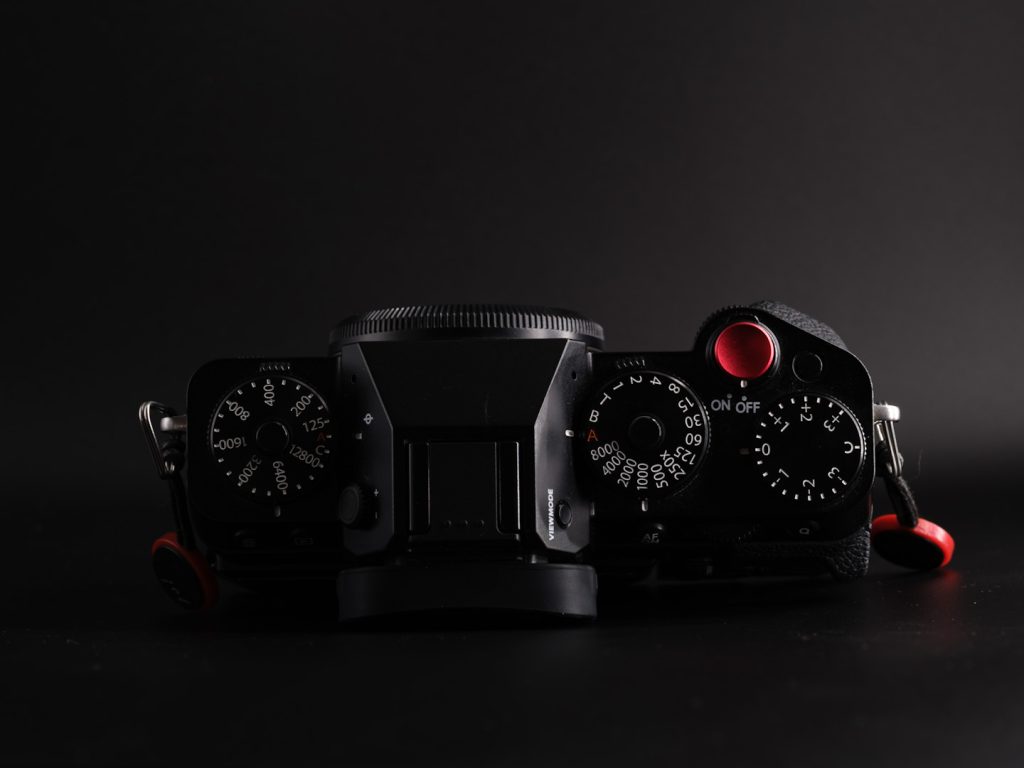
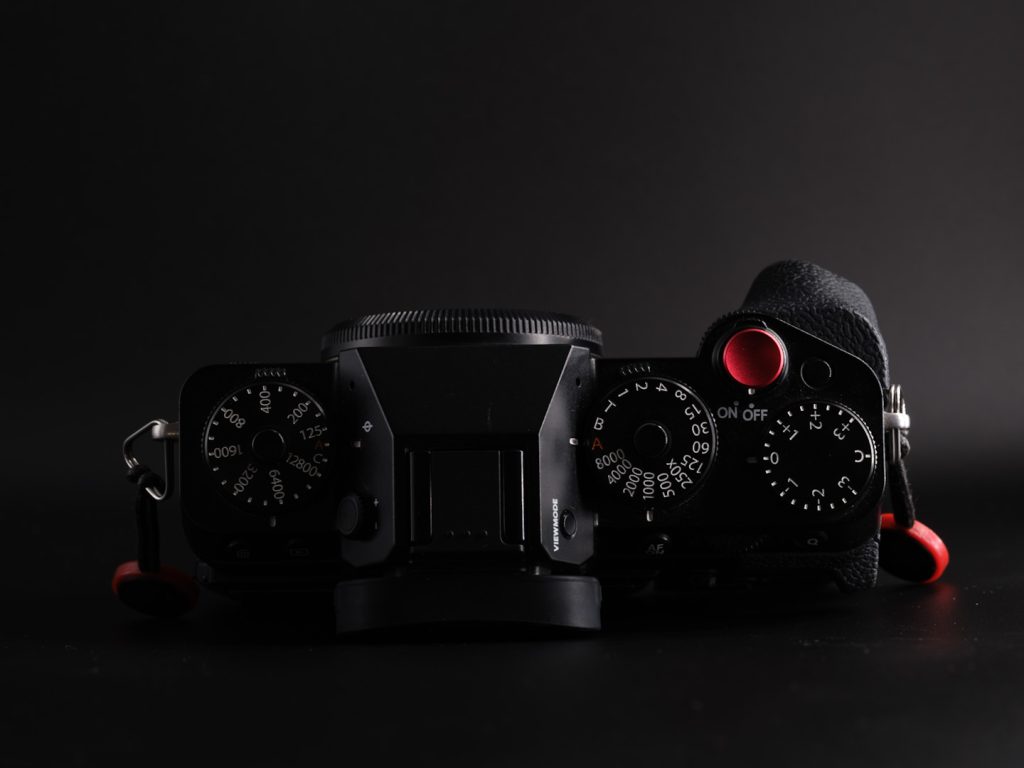
The grip on the Z6III is one of the best I’ve used — it fits my small-to-medium hands perfectly with no awkward angles or pressure points. It’s far more comfortable than my old Sony A7IV, which always felt slightly cramped and fatiguing over time. The X-T5, with the SmallRig grip, gets close. Without it, comfort depends heavily on which lens you’re using — with the smaller Fujicron lenses it’s fine, but with heavier glass you do end up gripping harder, which can cause fatigue over a long shooting day.
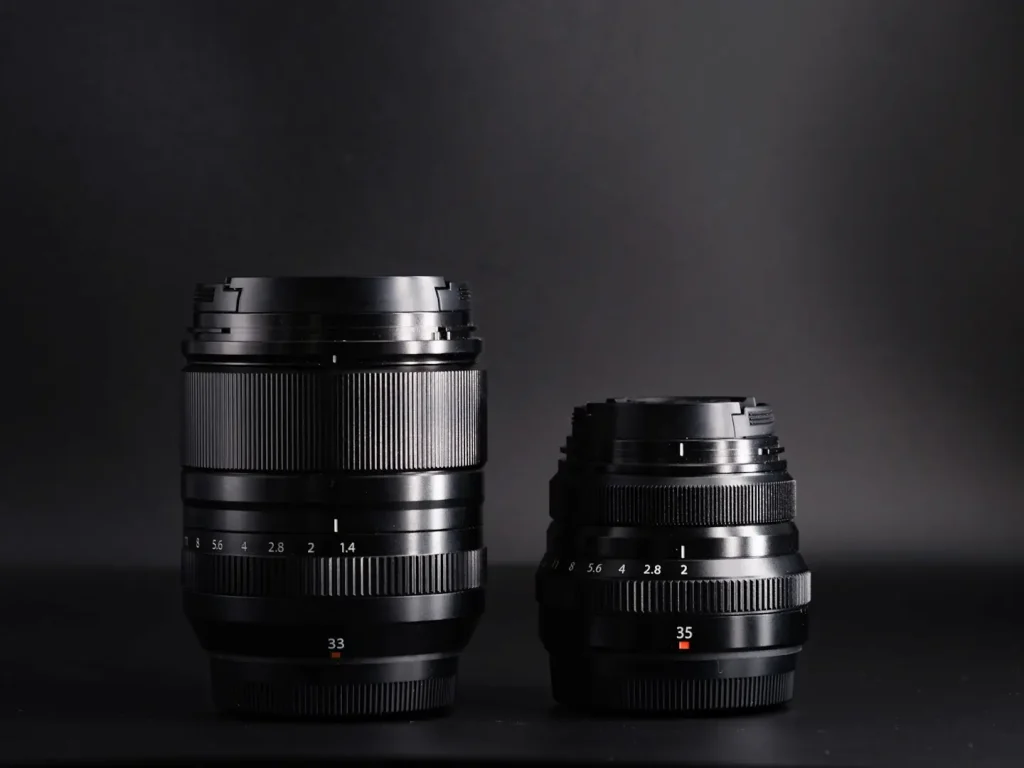
On paper, the weight difference between the two cameras isn’t huge, especially when you start pairing the XT5 with Fuji’s red badge primes or the Z6III with Nikon’s 1.8 S-line primes like the 35mm and 50mm. In the hand, though, the XT5 feels lighter and more compact. When I shoot with the XT5, I feel more like a traveller enjoying photography. With the Z6III, I feel more like I’m in “work mode.” Neither is heavy — the Z6III is still far more compact and manageable than something like my Z8 or GFX100S — but they do carry themselves differently.

If you asked me whether I’d be happy to carry and shoot either one all day, the answer is yes. This comes down more to preference than to any deal-breaking ergonomic difference. But if I had to pick the more comfortable camera to hold and operate over a long session, especially with slightly larger lenses, the Z6III takes it.
Viewfinder & Screen Experience
The 3.69 million dot EVF on the X-T5 with 0.80x magnification is still decent. Just a couple of years ago, it was considered excellent, but things have moved on. Does that make it bad now? No. It’s still a good viewfinder — it’s clear, sharp, bright, and refreshes quickly enough. I have occasionally found that the colour between it and the rear screen doesn’t quite match. Sometimes the image looks more saturated through the EVF and a little flatter when checking it on the rear LCD afterwards. In isolation, the X-T5’s viewfinder is very good and I’m perfectly happy with it. It’s also a step up from something like the 2.36M-dot EVF on my OM-3.
However, when you shoot the X-T5 back to back with the Nikon Z6III, you do notice the improvement. The Z6III EVF is a 5.76 million dot OLED panel, also at 0.80x magnification, but it feels more expansive and detailed due to the higher resolution and cleaner optics. There’s no doubt it’s better — it’s crisper, more refined and just looks more modern — and I appreciate that, but it’s not a dealbreaker for me. The X-T5’s EVF is good enough at this point, even if it does show a little grain in low light.
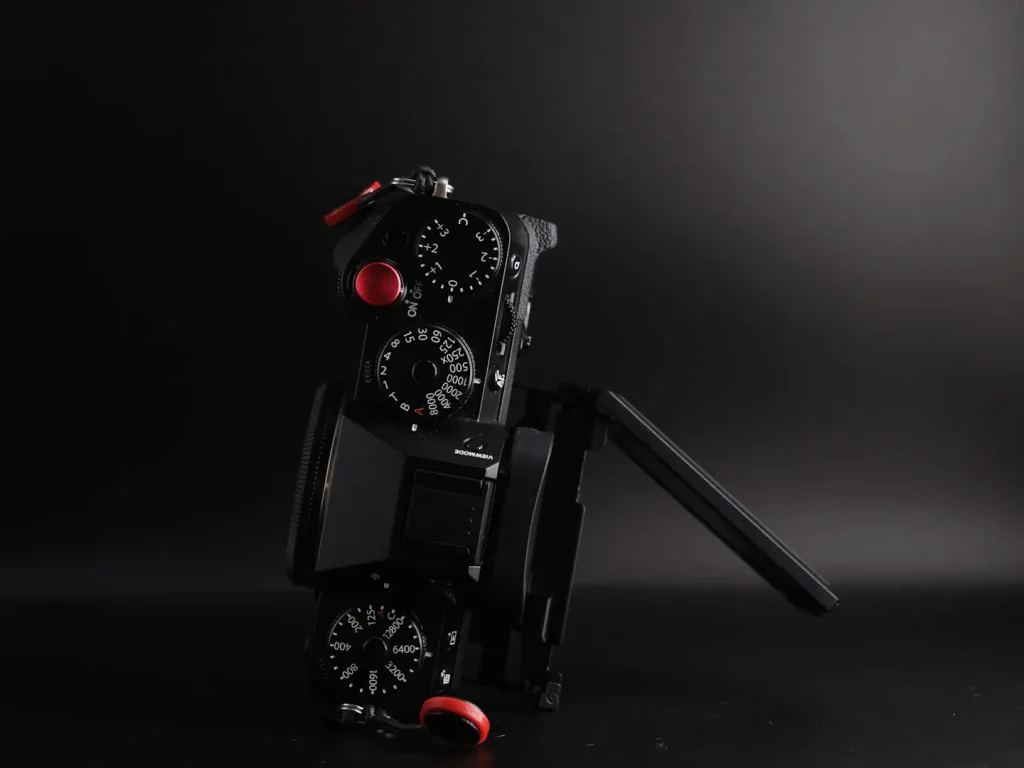
Where there is a significant difference is with the rear screen. The X-T5 uses a three-way tilt 1.84M-dot LCD, and it feels like it was actually made for photographers. It’s always ready to go, and you can quickly shoot from above your head, from down low, and — crucially — from the waist, without the screen sticking out a few inches from the side of the camera. It’s faster, more discreet and keeps the footprint tight.
The Nikon Z6III uses a fully articulating 3.2-inch 2.1M-dot screen. It’s fine, and it makes sense if you’re a hybrid shooter filming video, but for photography it’s a less elegant design. It’s slower to use for quick angle changes and adds a bit of bulk when you just want to get a shot off without thinking.
The only people who I can see preferring a fully articulating screen like the one found on the Z6III are hybrid shooters shooting video or maybe if you’re partial to constant selfies, which quite frankly, if you’re reading this article I hope you’re not or I won’t talk to you ever. 😄
Autofocus & Speed – Real-World Keeper Rates Matter More Than Hype

The Fuji X-T5 autofocus is quick in Single AF (especially with newer lenses) and it’s very accurate for still and slow moving subjects. When I’m out shooting, I mostly use Continuous AF with Zone focus, and on the XT5 that’s the most reliable setup I’ve found. Face detection works well when the subject fills around a third of the frame and isn’t turned more than about 90 degrees away.
I don’t use Fuji’s subject tracking mode much, but when I do, it does a reasonable job. With someone simply walking towards me, I’d expect around a 60–70% keeper rate — out of 10 frames, 3–4 might miss focus slightly. It’s fine, but it’s not a sports camera by any stretch of the imagination, and you do have to drive it a little to get the most out of it.

The Nikon Z6III, in my opinion, is not light years ahead in terms of basic face detection behaviour. It picks up faces at about the same speed, loses them at about the same angle, and detects them at about the same distance. But once movement comes into play, the difference becomes clearer. With the same test — someone walking towards me using Zone AF — I’m seeing 90–100% keeper rates on the Z6III.
I also spent time using Nikon’s 3D Tracking mode on trikes, scooters, and cars, and I couldn’t get it to fail. That made me switch to using 3D Tracking as my default mode — it’s that reliable. Keep your focus point central, put it on your subject, recompose as you like, and the camera just sticks to them, prioritising the eyes if Eye AF is enabled.
I also prefer Nikon’s automatic subject detection implementation. Whether you’re shooting humans, cats, dogs, or vehicles, it just figures it out. On Fuji you need to specify what you’re trying to track, whereas Nikon lets you leave it on Auto, or you can specify to make it even more precise — useful if you’re at a race track shooting something like MotoGP or F1.
In use: Fuji is good enough for most types of shooting, but Nikon is a level above when it comes to confidence and consistency.
Image Quality & Colour – Real Output, Not Pixel Peeping

Image quality from the X-T5 is very good. In good light it can be beautiful, and day to day it’s excellent. Files are sharp, colours are great for people and street work, and there’s plenty of detail in those 40MP images. High ISO performance is good up to ISO 3200, still fine at 6400 and passable at 12,800 with a bit of post work. Coming from the older 26MP X-Trans sensors, I’ve noticed that the grain on the 40MP sensor is finer and more natural looking, so as long as you don’t mind a bit of grain, low-light performance is perfectly usable even at higher ISOs.

What I really enjoy about the X-T5 image quality is the tonality and feel of the files. They look less digital than many other cameras — not quite as clinical — and the Fujinon red badge lenses help here too because they are incredibly good. There used to be a lot of talk about Fuji RAW files being difficult to process in Lightroom, but as of now, I use Lightroom with XT5 files and don’t see the old Fuji “worms” or any other issues that would make me consider switching. Yes, Capture One’s Fuji profiles are slightly better, but not enough to justify relearning years of Lightroom workflow.
Dynamic range on the X-T5 is around 10 stops, which is plenty for most scenarios. If you’re shooting high-contrast sunsets you’ll want to bias exposure toward the highlights, as they can blow quickly if you’re not careful, but for general use it’s more than enough and actually pretty similar to the Nikon Z6III. The only real difference I’ve noticed is that I can recover highlights slightly more cleanly with the Nikon, and shadows stay cleaner when lifted in post. Both cameras offer more than enough DR for day-to-day shooting. For serious landscape work you might look elsewhere, although personally I’m not a huge fan of endless dynamic range — even though I fully appreciate the flexibility it gives.

The Z6III isn’t dramatically sharper, nor is it some night-and-day leap in image quality over the XT5, but what it does offer is better tonal transitions, especially in skin tones and especially under less than ideal lighting conditions. The full-frame files produce slightly more natural-looking skin and more accurate greens, which I’ve always found just a little off on Fuji cameras. You can also push Nikon files harder in post while keeping things looking natural.

Overall, yes — the Nikon Z6III does offer better image quality in terms of low light performance, subject isolation and tonal handling, but if I’m being totally honest, we’re reaching the point where those differences matter to fewer and fewer people. Mainly those pushing the extremes — shallow depth of field, maximum dynamic range, very low light. For everyone else, both of these cameras will allow you to create images that genuinely blow you away.
Fuji is well known for its film simulations, and rightly so — there’s a look for almost every situation. I often shoot Classic Chrome and use it as a base in Lightroom. Nikon doesn’t have quite as many options, but the profiles it does have are very good. The Natural profile is excellent for general use and Nikon’s black and white profiles are exceptional, easily rivalling Fuji’s Acros simulation, which is often held up as one of the best monochrome looks from any manufacturer.
Made up your mind? Check the latest prices below.
Fujifilm X-T5
Check price on Amazon →Nikon Z6III
Check price on Amazon →Final take: both offer excellent image quality. Yes, the Nikon Z6III edges it in low light, dynamic range flexibility and tonal richness, but at this level I’d honestly say image quality is no longer the deciding factor. Handling, lenses and how much you simply enjoy picking the camera up and shooting it are where the real differences lie. For a specific kind of user, the Nikon advantages will matter. For most people, both are more than capable of producing stunning results.
Nikon Z6III vs X-T5: Everything Else That Actually Matters
IBIS Performance
Both cameras are rated only one stop apart on paper (Fuji at 7 stops, Nikon at 8), but in real-world use the Nikon simply feels more confident. I haven’t measured it scientifically, but the Z6III gives me a higher keeper rate at slower shutter speeds, which is impressive considering it’s stabilising a larger sensor. With both cameras I can get usable handheld shots around 1 second exposure at 20–30mm equivalent focal lengths, but I get more keepers from the Nikon. Simple summary: the Fuji is ok, the Nikon is better.
Memory Cards & Buffer Behaviour
The X-T5 uses dual SD card slots, while the Nikon Z6III gives you one CFexpress Type B slot and one SD slot. This may matter depending on how you shoot. If you don’t already own CFexpress cards or don’t want the added cost, that’s something to consider. In my use, the Fuji cannot sustain high-speed bursts for as long and takes longer to clear the buffer. With the Z6III, I was firing continuous bursts and got bored before the camera even hinted at slowing down. If you shoot action, wildlife, kids, street movement or anything burst-heavy, CFexpress does make a difference in feel.
Battery Life
Battery life on both is very good. The Z6III lasts slightly longer, but in reality both cameras will comfortably handle a full day of shooting — I’m talking sunrise, sunset and casual shooting throughout the day on a single battery. I carry a spare for both systems out of habit, but battery performance isn’t a deciding factor here.

Menus & Custom Setups
Unlike the Z8 with its confusing banks system, the Z6III uses a simple C1–C3 custom setup that you assign directly to the PASM dial. It’s straightforward and quick to access. The X-T5 gives you seven custom profiles, accessed via the Q menu (or assignable to a function button). I actually like both systems: Fuji gives you more slots and lets you name each one, which is helpful as I have a habit of setting custom profiles and forgetting what they were for. Nikon’s system is faster to access mid-shoot. Fuji wins on quantity and labelling, Nikon wins on immediate access.
Price & Real System Value
As of writing, the X-T5 costs $1999 and the Nikon Z6III is $2196, so there isn’t a massive gap. But when you factor in lenses, the story shifts. My typical setup would be:
- Fuji X-T5 + XF 23mm f/1.4 WR + 33mm f/1.4 WR + 56mm f/1.2 WR = $5,198
- Nikon Z6III + Z 35mm f/1.8 S + 50mm f/1.8 S + 85mm f/1.8 S = $4,157
I shoot Fuji as my main personal system and I love the X Series — especially the 1.4 and 1.2 primes — but given the price difference, the fact that the Z6III is the more capable camera overall, and the reality that the Nikon Z 1.8 primes match (and in some cases beat) the Fuji red badge primes, I have to say this: for most people, the Nikon Z6III is the better value and the more logical choice.
Who should still choose Fuji?
Anyone who genuinely values the shooting experience, intends to stick with the small Fujicron f/2 primes, and wants the smallest, lightest possible kit that still produces excellent images. But for most photographers looking at these two bodies side by side, the Nikon Z6III at its current price, paired with what I think is one of the best prime lens lineups available alongside Fujifilm, is simply too good to ignore.
Read Next
Fujifilm X-T5 Review
My in-depth look at Fuji’s best photographer’s camera — handling, colour, and real-world files.
Read the X-T5 Review →Nikon Z6III Hands-On Field Report
Early thoughts after days of shooting — AF, handling and why it feels built to work.
Read the Z6III Field Notes →Final Verdict – So, Which One Would I Personally Keep?
If I Could Only Keep One
For professional work: I would choose the Nikon Z6III. It’s faster to operate, more confidence-inspiring in fast-moving situations and the build quality feels like it would survive abuse for longer.
For personal enjoyment: I’d happily shoot the Fujifilm X-T5 all day. The shooting experience is more enjoyable and with the smaller f/2 primes it becomes a compact, highly capable everyday camera. But at its current price, that enjoyment comes at a premium.
For most people looking to buy one camera system in 2025/2026, the Nikon Z6III is the smarter choice.
If you’re still undecided, my full breakdown of the best mirrorless cameras of 2025 goes deeper into use cases and alternatives

